#worldbuilding speculation
Explore tagged Tumblr posts
Text
Monsters have internal anatomy. Organs and bones and muscles. tendons. whatever. No blood but it's all like. solid-magic in shapes mimicking organs, you know?
organic monsters have recognizable organs and bones and stuff. Mostly.
inorganic monsters? also have internal anatomy. it looks wildly different depending though.
2 notes
·
View notes
Text
The Lancetfish is a species that looks like it comes straight out of a realistic fantasy world building project.
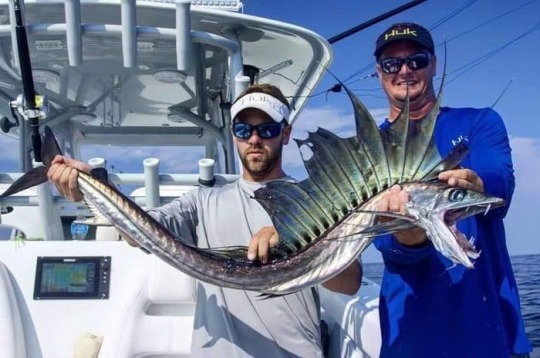
#speculative biology#speculative ecology#speculative evolution#speculative zoology#traditional art#traditional sketch#spectember#specposium#paleontology#fanart#paleo meme#paleo art#paleontologist#paleostream#paleobird#paleomedia#paleoblr#paleoillustration#paleoart#worldbuilding#world#fishing#world building#fantasy#realistic fantasy#fish#lancet fish#lancetfish
70K notes
·
View notes
Text

PRINTS AVAILABLE
if you’ve been following me long enough you know I love a mimic. From my false faced mermaids that I’ve been painting for years to butterfly dragons, I’m a big fan of illusion in the bestiary world.
I bring you the Ginkgo Draco, another member of the Botanical Drakes.
#concept art#creature design#fantasy art#creature concept#concept design#monster#fantasy#dragons#speculative biology#smaugust#smaugust2024#ginkgo#dragon#fantasyart#creaturedesign#conceptart#worldbuilding#plantdragon#digitalart#illustration#bestiary#creatureconcept#mimic#gingkotree#gingkoleaf
15K notes
·
View notes
Text
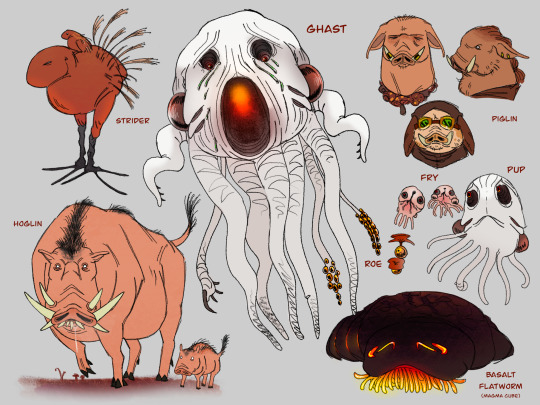
Nether life forms
(Constructs and undead not included)
#minecraft#mineblr#minecraft art#my art#minecraft fanart#minecraft nether#minecraft piglin#minecraft ghast#minecraft hoglin#minecraft magma cube#minecraft strider#worldbuilding#fantasy#speculative biology#my minecraft lore
7K notes
·
View notes
Text
I'm a big fan of unhinged worldbuilding in pornographic fiction, but I have to admit I get pretty annoyed when an author goes to all that trouble to explain something that falls completely within the normal range of plausible human behavioural and phenotypic variation. Like, if you're going to hit me with ten thousand words of elaborately justified speculative biology and the payoff in its entirety is "in this world, some women have penises", well, buddy, have I got news for you.
#media#fandom#fanfic#worldbuilding#speculative biology#pornography mention#penis mention#grumping#like at least make them shoot laser beams
6K notes
·
View notes
Text
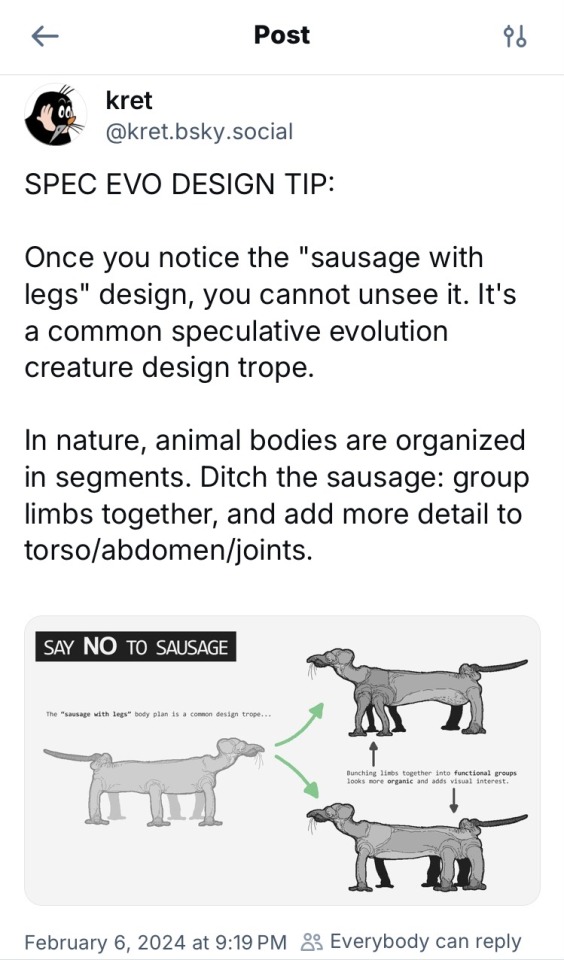
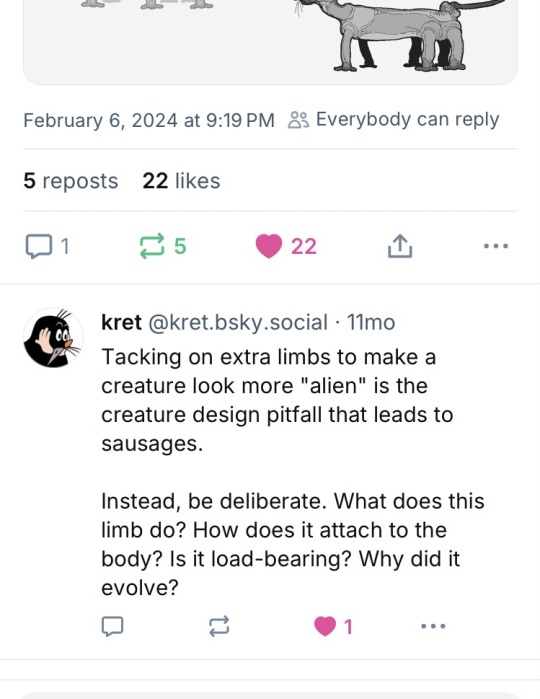
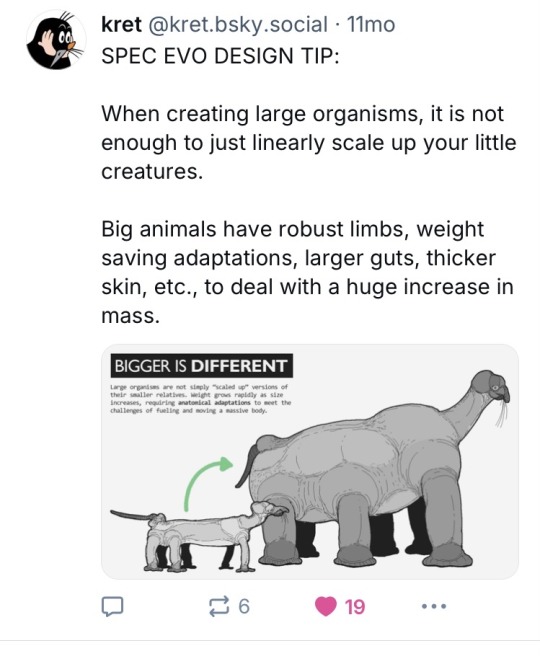
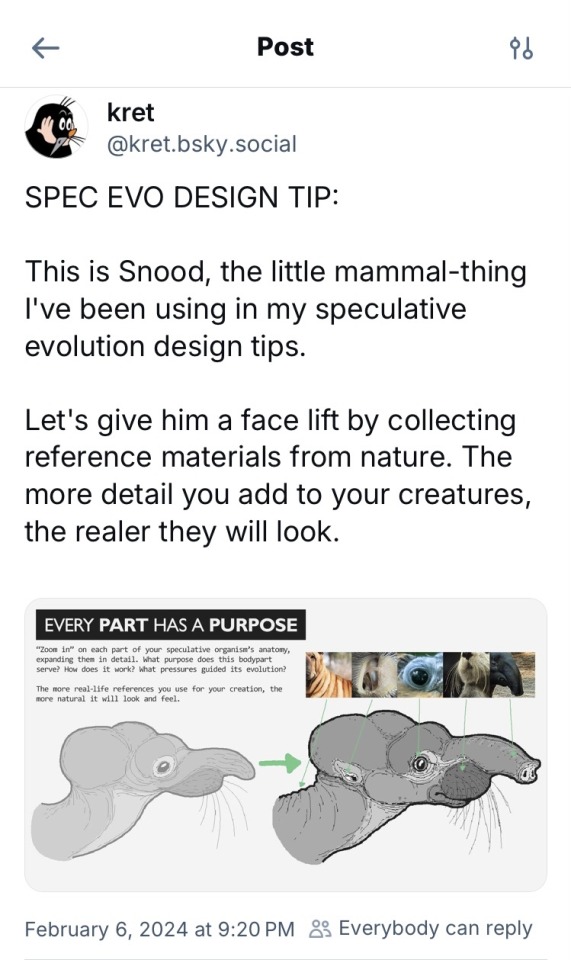
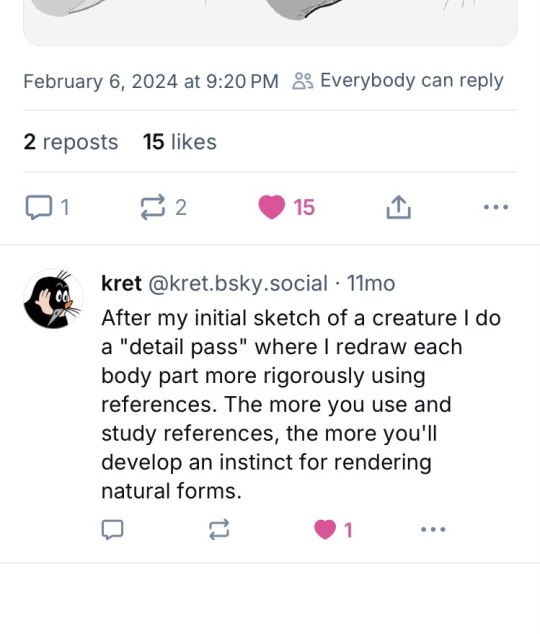
#bluesky#bsky#bsky social#artist on bluesky#speculative biology#speculative evolution#speculative zoology#specevo#spec evo#spec zoo#specbio#spec bio#worldbuilding#speculative worldbuilding#worldbuilding ideas#worldbuilding tips#creature design#creature concept#creature#creature art#art tips#art ideas#art advice#worldbuilding art#worldbuilding concept#artists#art hacks
3K notes
·
View notes
Text
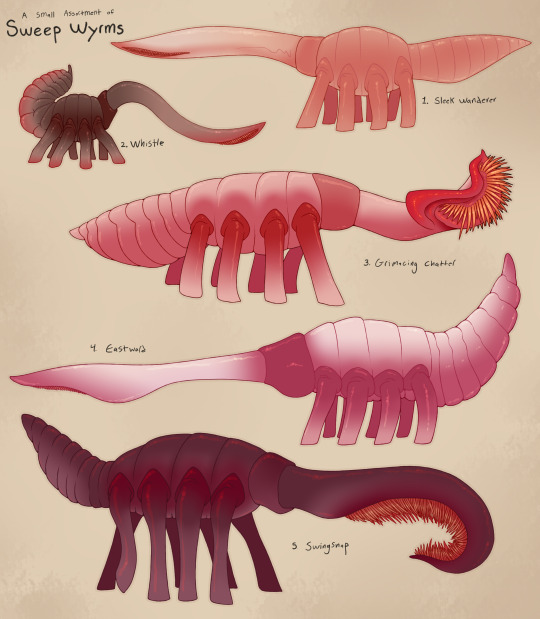
Wyrms come in a lot of different flavors in Abattoir land, so we're starting with the Sweep variety! More info found BELOW!
Containing some of the largest species of Wyrms, Sweeps are distinguished by their mouth placed ventrally on the proboscis, needle-like teeth, all 8 limbs used for locomotion, and a swollen hind gut. Sweeps are typically some of the most hardy Wyrms in the wastes, able to continue to move at all temperatures. They thrive at a range of about -100 to -160 degrees Fahrenheit, but are unbothered up and to around freezing point. They ARE more vulnerable to the scalding rain more typical to the Southern areas of their range. If they get to hot they swell up and can burst, so they typically try to stay Northernly! Honestly the best weather prediction you can find nowadays is these guys stuffing themselves full of ice and snow before a storm rolls in.
But! We've got a varied bunch here so lets get into the SPECIFICS of these Annelids! I've got a small sample just to show off some of the basic types you'll encounter.
Sleek Wanderer These guys are found in the remnants of the great plains, which are now vasts expanses of snow and ice. Sleeks are primed to spend their lives enduring the biting winds of their home as they snuffle their way through the ground cover. They move especially slowly, often a single step for every sweep of their mouth! Being in such a barren home, they don't really worry about too much going on around them. Assuming you don't bother them too much you can touch them or even ride one and it wont pay you any mind. The only time they get a little aggressive is when brooding, then they may try to strike. Though it isn't anything you could not leisurely side step.
Whistle The noisiest of the bunch, these guys are known for the iconic whistling noise they make during the uh.. digestion process. They live in warmer areas and eat a lot of plant matter so they tend to have a more swollen gut. On the smaller side of things though! And a LOT quicker than other sweeps, they WILL turn and slash you if you startle them. Still not fast enough to meaningfully chase a human, but they got some reach on em! They typically run into humans a bit more as they also like to congregate around the exteriors of Abattoirs to eat the plants that grow there.
Grimacing Chatter The most BEAUTIFUL of the sweeps, these guys like to curl up their 'lips' and expose their teeth down to the roots. Their teeth are mobile as well, used to shift through the snow and dirt for food. The sound of these teeth clattering against each other is a signature of these big beasties. Probably for the best as these fellas are EXTREMELY aggressive! They are the Southern most variety of sweep, dealing with a wide range of predators by flailing their head towards any perceived threat. If you get caught in their maw they WILL start to chow down on you, never a missed meal with these guys!
Eastward A sweep that enjoys the spoils of a sanguine Atlantic! Eastwards are so named because they are usually always facing that direction, nibbling at the snow and ice to feed on any blood that blows in on the breeze. They begin their lives spawned by the blood sea and will spend the first half of their lives walking away from the ocean. The second half of their life is spent walking back towards it! Once their they are back at the shore, they are able to withstand the heat drifting up from the sea by sweating profusely. They keep most of their body on the frozen shore, reaching into the warmth with their big ass mouth. After a life of walking, they will gorge themselves on blood until they breed, after which they promptly die. Nature is beautiful even now!
Swingsnap While Wyrms have no eyes and therefore don't really have a concept of light, the fact that humans and their derived forms still mainly rely on sight has greatly influenced the Swingsnap. Their dark coloration is perfect for blending in with the eternal night of the wasteland! They possess a highly sensitive sense of smell/taste to track down the remnants of humanity. Once they come upon their quarry, they are quickly able to coil their toothy maw around them, stabbing into them with many hundreds of teeth. Their prey is 'chewed' by the constant coiling and shifting of the mouth, drunk down bit by bit. After a week or so of gnawing, they will drop the remaining pile of gristle and begin the hunt once more.
That's the gist for these fellas! Typically these are the chillest of all Wyrms, both literally and in the attitude sense! Most of the time you'll run into these guys just in the middle of nowhere. Stand still and they'll most likely just pass you by.
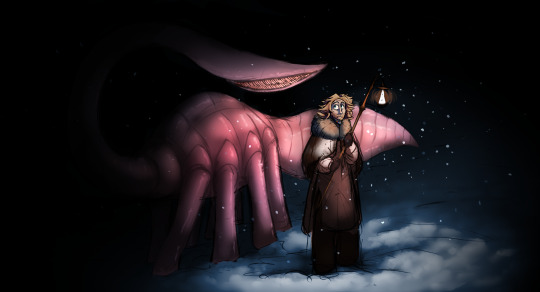
That being said all varieties can still bite!
#i have a anatomy post that is supposed to come before this but i got too hype#the abattoirs#art#worldbuilding#speculative biology#spec bio#wyrms#speculative evolution#spec evo
2K notes
·
View notes
Text
GUYS
Idk if someone else has thought of this before, but hear me out on this new worldbuilding headcanon for Minecraft. Phantoms pose the same ecological role as IRL vultures. That being, they eat dead bodies. The reason a lot of them swarm (and even attack) the player when they haven't gotten sleep is because they sense lack of energy (which, for a lot of animals means death is nearby) and assume the player is either dead or dying.
#minecraft#minecraft worldbuilding#minecraft ideas#writing inspiration#speculative biology#speculative fiction#minecraft headcanons#minecraft lore#world building#mineblr#minecraft phantom#minecraft phantoms#1k notes
1K notes
·
View notes
Text

A species of blep from cold steppes. Like most species of furred tetrapods, it keeps its young in a pouch for months until they are hardy enough to run about and eat solid food. It eats lichens, roots and mosses primarily, but is an opportunistic scavenger if those prove scarce. It lives in groups of variable sizes, with complex familial dynamics, but these groups can be spread out over great distances; they communicate by loud bellows that cover long distances despite great winds.
#okali#fantasy#wandering okali#species#art#graphi's things#worldbuilding#speculative biology#specbio#xenofiction#creature design
6K notes
·
View notes
Text

I’m going insane I want to eat it so bad
#art#my art#minecraft food#minecraft#minecraft headcanons#minecraft lore#lore#headcanons#minecraft worldbuilding#world building#worldbuilding#speculative worldbuilding#food art#food#food worldbuilding#mineblr#spec evo#spec bio#specbio#speculative biology#speculative fiction
2K notes
·
View notes
Text

what if dragon hatchlings were fluffy. what if gumdrops fell from the sky.
#Wof headcanon#my art#oc art#horst#wof art#wings of fire#dragon art#worldbuilding#speculative biology#maybe fuse isn’t the right word. long bones grow post-hatching on cartilage template???
1K notes
·
View notes
Text
Musing about generic universal symbols for people on Earth-With
I think there might be 3 main ones?

2 notes
·
View notes
Text
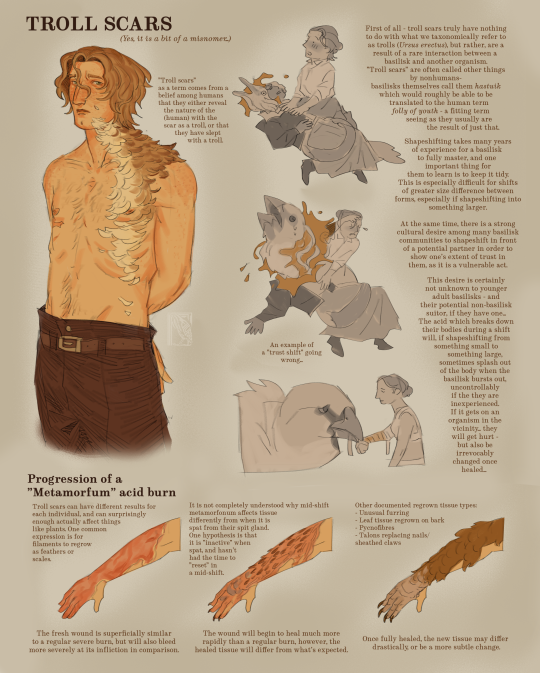
Well i have decided to make a little silly phenomenon in pareidolia so. yes folke is used as an example for a reason no i wont elaborate... but i will elaborate about the phenomenon below...
most humans associate the scars with trolls (keep in mind this is about basilisks in the nordics so) because of the idea that trolls shapeshift (in Pareidolia Reality they don't and the "real" trolls are more baueresque than the more traditional view. but its all human terminology anyway lol). any humans with troll scars tend to try to hide them bcs of it, but it can be hard depending on how extensive they are - if you just got a scar where you have extra furring, you may just be able to shave it. if you got the feather variant, it might suck a bit more lol...
troll scars are premanent, the tissue it affects will be forever changed.
filament tends to be somewhat adapted to fit where the original tissue was. claws won't grow from random patches of skin etc.
pigment is usually inherited from the scarred individual, but on rare occasions it may spontaneously "pick up" on local bird species pigmentation like basilisks do in development (as baby)
metamorfum acid burns heal very fast - a large area can heal in about as little as a month. but that's just for the "superficial" healing, and it will appear like a normal burn scar at first until it'll slowly start to grow the new filaments or the tissue will appear to "change".
basilisk acid burns rarely ever go deeper than the skin because it stops being active fast after exiting the basilisk body.
many basilisk cultures are hesitant about interspecies relationships (with other sophonts i mean) using hastuik as a justification. interestingly enough, metamorfum accidents don't seem to affect harpies as badly, probably because the two species are related, so there's usually less of a hesitation in regards to those relationships. it may vary however from community to community
hastuik is a basilisk term (well among scandinavian basilisks) which often refers to these scars but also in other contexts and is also a combination of two words - "hastu", which is also a family suffix (used for chicks before they pick their name), whose meanings include young/youth, chick and naiveté, while "ik" can be translated to foolishness/stubbornness (specfically with the connotation that it is unreasonable). calling another basilisk hastuik is basically calling them naive/childish in a derogatory sense since the term is kind of obsolete for them anyway (the acid burns heal normally for them)
#worldbuilding#fantasy#speculative evolution#spec evo#spec bio#speculative zoology#speculative biology#speculative fantasy#cw: injury#cw: burn#for the little diagram at the bottommmm#pareidolia tag#oc: folke#bestiary#basilisk#lore#artists on tumblr#art
999 notes
·
View notes
Text

PRINTS AVAILABLE
Another Botanical Drake added to the compendium. Today is the tropical Draco Monstera
#concept art#creature design#fantasy art#creature concept#concept design#monster#fantasy#dragons#speculative biology#smaugust#smaugust2024#monstera#dragon#fantasyart#creaturedesign#conceptart#worldbuilding#plantdragon#digitalart#illustration#bestiary#creatureconcept#mimic
4K notes
·
View notes
Text
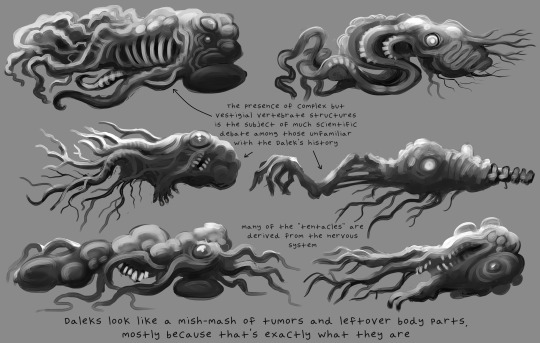
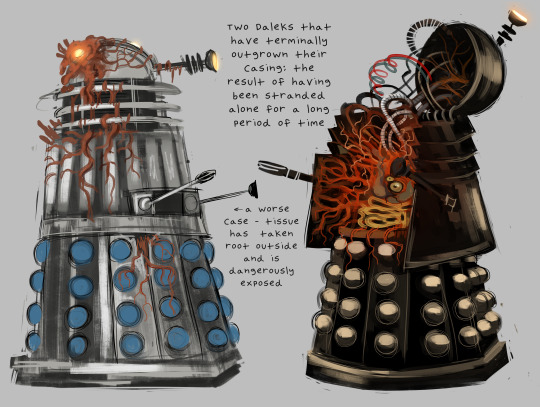
Though their initial mutations were the result of long term nuclear war, it's actually an intense culture of propaganda and strictly enforced conformity policies that have kept the Daleks in their current state. Every Dalek undergoes surgery just after birth; not to mitigate the effects of irradiation, but to rid them of whatever is legally considered "imperfections to the Dalek form" (usually throwbacks to a humanoid body plan, such as teeth and hands) and physically ready them for their casing. Additional surgeries must occur throughout a Dalek's life to prevent them from becoming "rooted" - a painful, often fatal scenario in which the Dalek overgrows their own shell and cannot be safely removed. Not only does their homogeneity serve to reinforce their fervent belief in genetic superiority, but the resulting chronic health issues prevent insurrection; a Dalek's fear of losing access to regular healthcare colors much of their judgement, and most attempts at dissent end as soon as their painkillers run dry.
#All the Strange Strange Creatures#< tag for this little dr who worldbuilding / creature design project im going to be posting#doctor who#i guess i could also tag this#speculative biology#doctor who art tag
7K notes
·
View notes
Text
Some notes on worldbuilding with carnivorous cultures:
Animals feed more people than you think. You don't kill a cow for just one steak, this is a modern misconception since we're removed from the actual animals we eat our meat from; a single cow has several kilos of meat. In fact, slaughtering a single cow often means a feast time for possibly dozens of people. Every part of an animal can be used, and you can see this in cultures that live by ranching and transhumance.
Here, you should look at the Mongols and the people of the Eurasian Steppe, the people of the North American Plains, the people of the Pampas (fun fact; Buenos Aires was called the "carnivore city"), European and Asian cultures that practice transhumance, and those of the Arctic circle.
There are many ways to cook meat, but arguably, the most nutritious way to consume meat is in stew, as it allows you to consume all the fats of the animal and add other ingredients. In fact, mutton soup and stew historically was one of the basic meals for the for people in the Eurasian Steppe, who are one of the people with the highest meat consumption in the world.
Of course, meat spoils away easily. Fortunately, from jerky to cured meats, there are ways to prevent this. In pre-industrial and proto-industrial societies, salted meat was the main way of consumption and exporting meat. This makes salt even a more prized good.
Often, certain parts of animals like eyes, the liver, the testicles, the entrails, are considered not only cultural delicacies but as essential for vitamins and nutrients unavailable in environments such as the poles. The Inuit diet is a very strong example.
Pastures and agriculture have often competing dynamics. The lands that are ideal for mass pasture, that is, temperature wet grasslands, are also often ideal for agriculture. So pastoralism has often been in the margins of agrarian societies. This dynamic could be seen in the Americas. After the introduction of cattle and horses, the Pampas hosted semi-nomadic herdsmen, natives and criollo gauchos. The introduction of wire eventually reduced this open territory, converting it into intense agriculture, and traditional ranching was displaced to more "marginal" land less suitable for agriculture. Similar processes have happened all over the world.
This also brings an interesting question to explore. Agriculture is able to feed more people by density. What about species that DON'T do agriculture, because they're completely carnivorous? The use of what human civilization considers prime agricultural land will be different. They will be able to support much higher population densities than pastoralism.
Pastoral human populations have developed lactase persistance to be able to feed on dairy products even in adulthood. This mutation has happened all over the world, presumably with different origins. In any mammalian species that domesticates other mammals such a thing would be very common if not ubiqutous, as it massively expands the diet. Milk provides hydration, and cheese, yogurth and other such products allows long lasting food sources.
What about hunting? Early humans were apex predators and we are still ones today. However, humans can eat plants, which somewhat reduces the hunting pressure on fauna (though not the pressure of agrarian expansion which can be even worse). An exclusively carnivorous species (for example some kind of cat people) would have to develop very rigid and very complex cultural behavior of managing hunting, or else they would go extinct from hunger before even managing domestication. These cultural views towards hunting have also arosen in people all over the world, so you can get a sense of them by researching it.
It is possible for pastoral nomadic people, without any agriculture, to have cities? Of course. All nomadic peoples had amazing cultures and in Eurasia, they famously built empires. But they traded and entered conflicts with agrarian societies, too. They weren't isolated. Most of nomadic societies were defined by trade with settled ones.
The origin of human civilization and agriculture is still debated. It would be probably completely different for a non-human carnivorous society. One possible spark would be ritual meeting points (such as the historical Gobleki Tepe) or trade markets growing into permanent cities. But in general, pastoralism, hunting and ranching favors low-density populations that would be quite different.
Fishing, on the other hand, is a reliable source of protein and promotes settled cities. One can imagine acquaculture would be developed very early by a civilization hungry for protein.
Other possibilities of course are the raising of insects and mushrooms, both very uncommonly explored in fiction besides passing mentions.
Of course, most carnivorous species have some limited consumption of plant matter and many herbivores are oportunistic predators. The main thing to ask here is what the daily meal is here. For most human agrarian cultures, it's actually grain (this is where the word meal comes from). What about species that cannot live with a grain-based diet? You will find that many things people take for granted in agrarian society would be completely different.
As I always say: the most important question you can ask is "where does the food comes from?"
I hope you found these comments interesting and useful! I would love to do a better post once I'm able to replace my PC (yes, I wrote this all in a phone and I almost went insane). If you like what I write and would love to see more worldbuilding tips, consider tipping my ko-fi and checking my other posts. More elaborate posts on this and other subjects are coming.
#cosas mias#worldbuilding#speculative evolution#spec evo#spec bio#writing advice#biotipo worldbuilding
2K notes
·
View notes